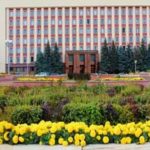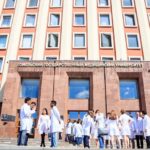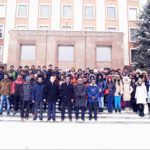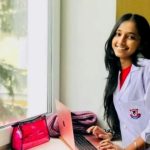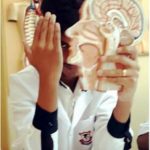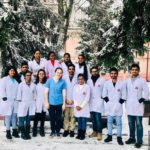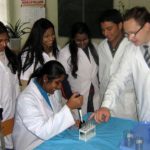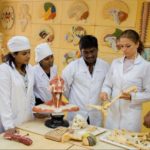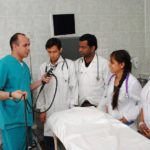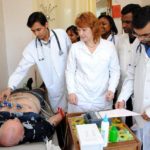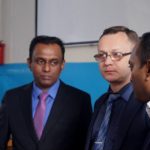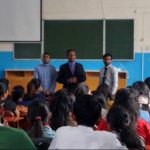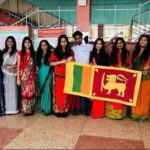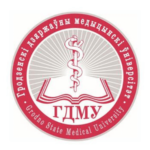Gomel State Medical University is recognized by the World Health Organization, ECFMG (USA), GMC (UK), AMC (Australia), SLMC (Sri Lanka), and other countries globally owing to Belarus’s standardized education system and Quality educational standards, studying there should be an excellent choice for students from across the globe. Thus, students from all over the world choose Belarus to enroll in their respective courses annually.
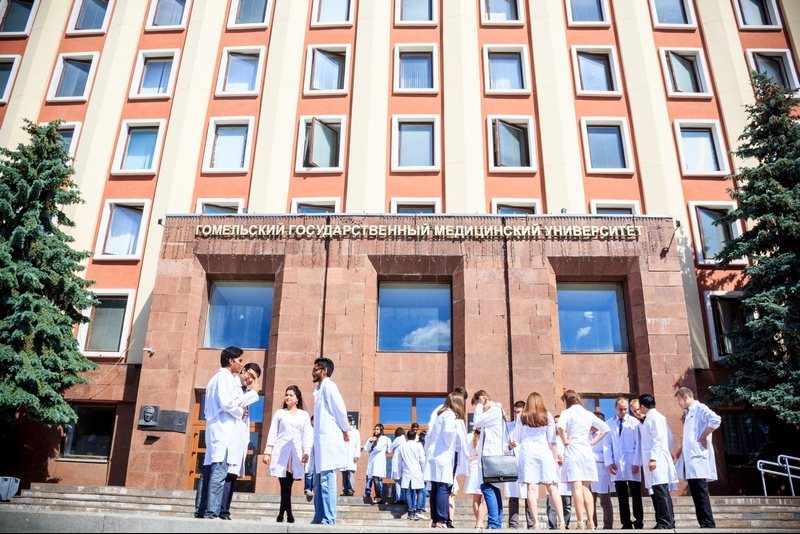
The Byelorussian Soviet Socialist Republic’s Council of Ministers and the Minister of Health established Gomel State Medical University in 1990, making it the newest of Belarus’ four medical schools. The World Health Organization (WHO) and many other worldwide professional associations recognize Gomel SMU as a contemporary university. Clinics across the Republic of Belarus, Western Europe, Africa, the Middle East, and Asia employ graduates of the university. Currently, there are over 600 highly trained professors and assistant professors working at Gomel State Medical University in 34 departments, 5 profile research laboratories, 1 central research laboratory, and 18 well-equipped large clinics.
The university’s clinical base is the finest in Belarus. The base utilizes cutting-edge medical technologies for diagnosis and treatment in the fields of endocrinology, cardiology, immunology, hematology, ophthalmology, and oncology as well as other medical specialties. The university library, with its wide collection of books and other resources, Internet access, and three reading rooms, provides students with the resources they need to thrive academically. Modern university hostels offer fast Internet access, comfortable flats, common spaces, and workout rooms. Since its inception, the institution has taught over 2000 doctors from Africa, South America, Poland, Turkey, Russia, China, Vietnam, Lebanon, Iran, the Newly Independent States, and Western Europe.
Why should you enroll in Gomel State Medical University's MBBS programme?
FACULTIES
WHY STUDY IN GOMEL STATE MEDICAL UNIVERSITY?
MEDICAL FACULTY

The first to third-year students can acquire the fundamental training required to instruct any doctor as well as social-humanitarian and natural-science fields. The most in-depth research has been done in the domains of microbiology, histology, normal and pathological physiology, general, bioorganic, analytical, and biological chemistry, as well as medical and biological physics. It established the knowledge and skill foundation.
Senior students (Years 3-5) integrate instruction in diagnostic profile subjects with the study of clinical disciplines. The same clinical subject is studied by students of the medical faculty and the faculty of medical and diagnostic sciences. Infectious diseases, internal medicine, surgical diseases, obstetrics and gynecology, etc. Understanding more about radiotherapy, radiation diagnostics, and functional diagnosis as well. However, the majority of time—1770 hours—is spent studying the various aspects of clinical laboratory diagnosis.
The Department of Clinical Laboratory Diagnostics, Allergy and Immunology, located on the SE “Republican Scientific and Practical Centre for Radiation Medicine and Human Ecology” base, prepares students for the specialty “Medical diagnostic work” by operating a clinical diagnostic laboratory with the most cutting-edge technology.
The foundations of the organization and management of services for clinical laboratory diagnostics, clinical biochemistry, hematology, clinical allergy and immunology, coagulation, cytology, immunity to chemistry, molecular biology, and genetics, and clinical microbiology are just a few of the components that are developed in stages to prepare students for clinical laboratory diagnosis.
The students learn how to evaluate laboratory data, select an appropriate survey approach and tactics for different clinical and diagnostic groups, and understand the fundamentals of laboratory management while also taking into account the technical elements of contemporary laboratory equipment.
Despite the complexity of the curriculum, years of students are not constrained to studies. Each faculty member is able to demonstrate their abilities in amateur sports divisions and engage in the social and cultural life of the school and community.
Students in the Faculty of Medical and Diagnostic may attend scientific gatherings as early as their first year, and this work is fascinating and thrilling. Graduates receive the title “doctor,” opening up the option of employment in medical offices and diagnostic profiles in centers for healthcare, hygiene,, and epidemiology.
The Gomel SMU Graduates of the Faculty of Medical and Diagnostic completing exams after the internship qualifying for independent work. 1059 doctors were prepared throughout the course of the faculty on a specialization “medical-diagnostic case” (issues 2002–2016).
The best graduates of this faculty work as the head of clinical diagnostic laboratory diagnostic departments of health care institutions, faculty departments of the university, medical college, are trained in graduate school at the University departments.



